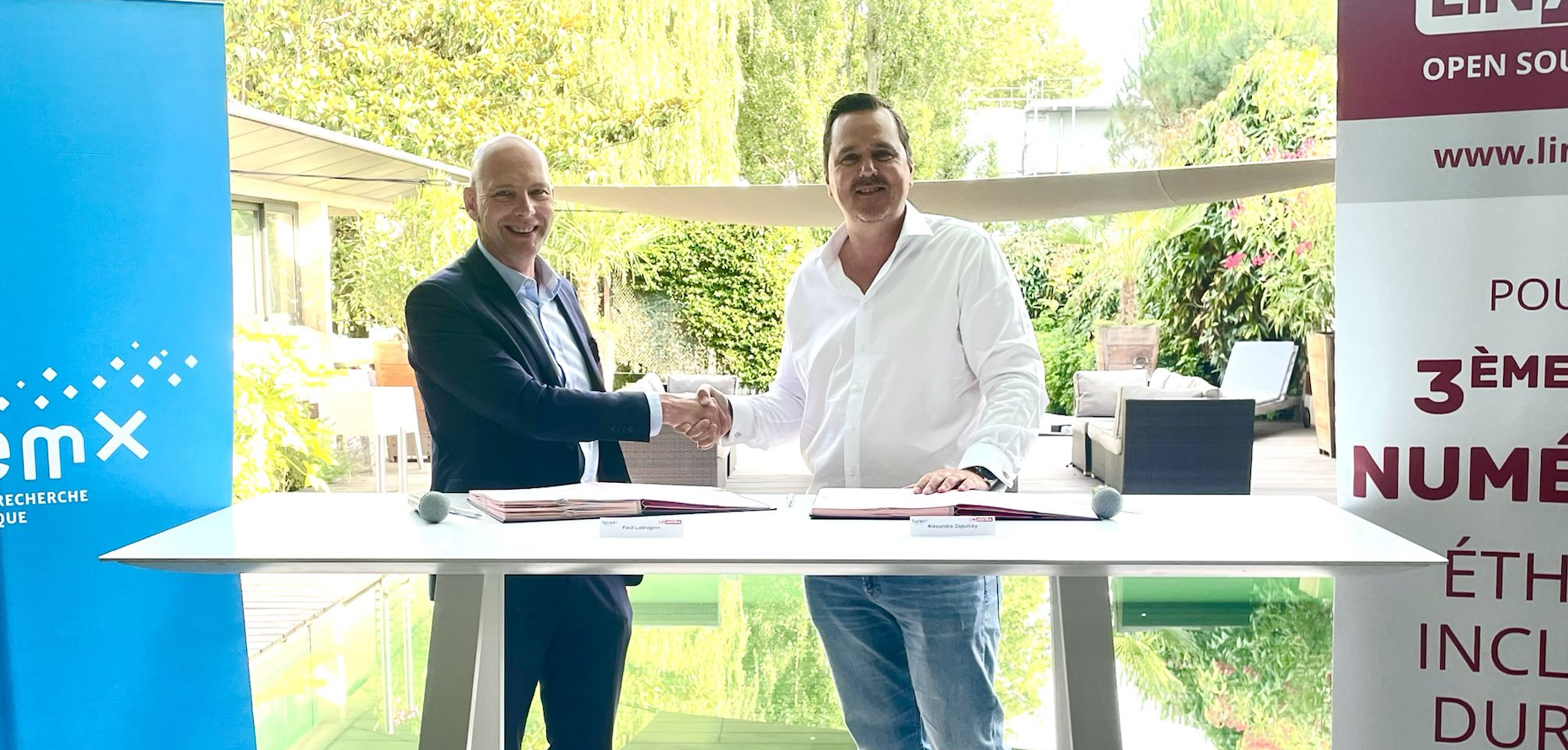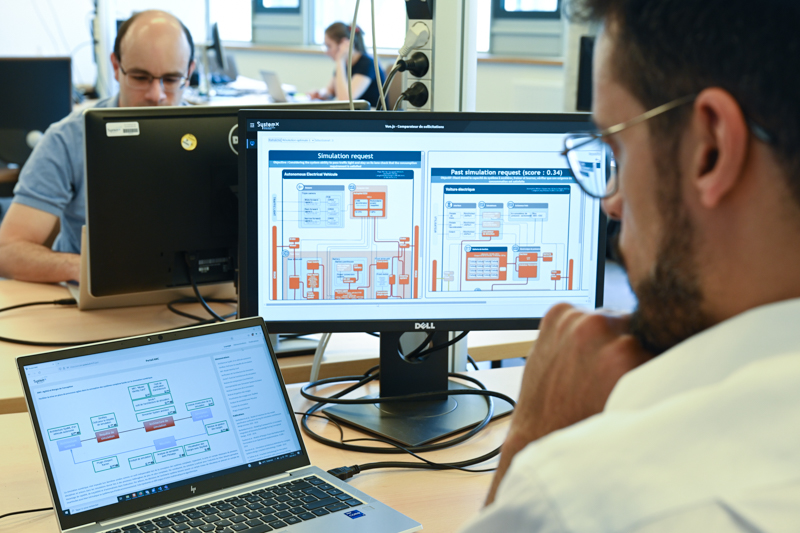The very first research projects of the Anthropolis Chair have just ended: unprecedented in France, supported by SystemX and CentraleSupélec* and funded by 5 industrial partners (Alstom, Engie, RATP, Renault, SNCF) for a duration of 4 years, it has gathered a multidisciplinary team that has strived to better define the contours of the current and future mobility experience by relying on the development of eco-innovations. The design, modelling and optimisation of shared mobility services, which can be integrated with autonomous vehicles, were explored.
The works of the Chair have placed the human being at the crux in the design of systems and services of the city and its agglomeration, with particular attention to the interactions between mobility systems (of individuals and goods) and other systems and services, starting from the objectives specific to each user as well as the public authorities.
Subject to strong mobility challenges, the Saclay plateau – where IRT SystemX is located – was an ideal observation area for the initial work of the Chair. The institute wishes to develop its conclusions further and is therefore ready to renew it for another of 4 years.
3 areas of research
The Chair’s work was structured around three main areas of research:
- “Understanding uses”: this area of research, based on interviews and observation of the people’s daily mobility, has led to the characterisation of transport quality and problems in a door-to-door vision of commuters’ profiles, as well as the modelling of travel experiences.
- “Foresight and Innovation”: The Chair was interested in breakthrough objects in a broad sense of the term, possibly leading to major changes in urban mobility, from technologies such as IOT (Internet of Things) or vehicles connected to local policy elements so as to appease the city centers, and has set prospective scenarios for mobility by 2030.
- “Impact analysis” aimed at developing models and methods of optimisation and simulation, capable of taking into account the objectives of both users and operators. Several aspects have been studied, such as the evolution of mobility ecosystems, the transformation of business models or the sustainability of mobility services and systems.
Two theses, ambitious innovation projects, and collaborations at both the national and the international levels
The team of the Chair can be congratulated on some of the following items:
- 2 theses that have strongly contributed to nourishing the 3 research areas mentioned above
- “Modeling the traveling experience to design urban mobility”, Ouail Al Magrahoui (IRT SystemX). This thesis tackled the challenge of designing urban mobility systems, with the aim of developing a commuter experience model capable of both facilitating the diagnosis of commuting problems (commuter train, bus on demand and dedicated shuttle) and to improve the relevance of transportation models for commuters. By combining the viewpoints of user-experience design and transportation, it helps to deepen understanding of the way commuters experience their own journey and the problems that they face.
- “Synchronization of passenger and goods flows in urban mobility systems”, Abood Mourad (CentraleSupélec, Doctoral School Interfaces – University of Paris Saclay). This thesis focused on developing optimisation methods to meet the challenges of synchronizing passenger and freight flows in urban mobility systems, and more specifically carpooling, using autonomous, personal and shared vehicles. The goal is simple: to make best use of the available capacities on a fixed transport line so as to transport both passengers and robots which themselves help to transport parcels. The results showed that the solutions proposed by these two models can lead to a better use of the transport systems, while reducing the negative impacts on the urban environment.
- The chair is also involved in the supervision of two complementary PhD dissertations: the work of Reza Vosooghi (IRT SystemX) on the design, modeling and simulation of robot-taxi services and the work of Shaohua Yu (in co-supervision with the Northwestern Polytechnical University, Xi’an, China) on the optimisation of operations for delivery robots in an urban setting.
- Supervision of two Innovation projects with CentraleSupélec students. The Trottikit (2016) and Mooment (2017) projects have relied on the Radical Innovation Design ® method developed at CentraleSupélec, which consists of a systematic exploration of unsatisfactory uses and situations, so as to bring out “pockets of value”. On the one hand, the students were interested in improving the problems of active mobility within the city, especially the use of scooters in addition to other modes of transport, whether shared or individual. On the other hand, they have also highlighted the difficulties of shared mobility, by developing a car-sharing service made accessible through a connected button in order to simplify the movement of elderly people living in peri-urban areas.
- Numerous joint projects at the national and international levels
- At the national level, the Chair organised several study days, notably with the Square Paris team on the topic “Design of mobility experience” (end of 2017), the day on which Renault and Alstom were associated, and with the MADP (Mutations of Public Action and Public Law) chair of Sciences Po, which purpose is to study the implications for public law in relation to the development of innovative mobility services (Spring 2017).
- At the international level, two special joint projects have been put together with researchers from Eindhoven and AIT. A research collaboration with Singapore’s TUM- CREATE Autonomous Mobility Design Team (Henriette Cornet, Penny Wong) was also initiated in the spring of 2018.
- Workshops were held on the future of mobility, aimed at developing scenarios and mobility stories using personas models (fictional characters representing a class of users). These stories will be used by designers as a starting point for innovation approaches for mobility products or services.
- As well as 35 publications in scientific journals or at conferences.
The continuation of the work of the Chair
The next stage of the Chair’s work should begin in the fall of 2019: it will identify the fundamental methods and tools that will take into account the needs of the citizen-user, the city and the community, in the design process of systems and services. It will focus on tge reduction of greenhouse gas emissions from the movement of goods and people, as well as the improvement of air quality.
Three areas have been defined.
- Future mobility and urban life: the research topics will be mobility and demobility by 2030, 2040 and 2050, given the stakes involved in urban mobility (logistics, food, waste management, etc.). The work will be based on the principle of zero fossil carbon emissions in 2050 (Paris Agreement).
- Revolutionising Mobility as a Service (MaaS): Work will focus on the possibilities offered by new technologies to create new forms of Mobility as a Service, particularly related to the degree of centralization or decentralization of these services (technologies such as blockchain could for example make it possible to organise ‘an open and distributed MaaS system).
- Infrastructures of the future: the ambition is to develop a modelling methodology for future infrastructures (sensors, shared mobility stations, smart charging stations, urban space evolution, etc.) replicable in different territories and able to take into account technological, organisational and societal factors.
Work will continue on the Saclay plateau, but also in two European cities and a North African city. A call for future partners interested in these issues has been launched!
3 questions for Gaston Grosjean, the new Services and Mobility Team Leader, Renault
Why is the topic of urban mobility favourable to a Research Chair?
By 2050, more than 70% of the world’s 10 billion people will live in cities. In addition, the demand for mobility of goods and people continues to increase due to the rising standards of living and the explosion of e-commerce.
What disruptions will this cause?
3 revolutions are currently taking place: firstly the digital revolution, by the advent of the smart city, the ecological revolution, by (finally) taking into account the issues of climate change in policies, and lastly the social revolution by the revisiting the established systems (Uberisation of companies, transition of the Gen Y to the adult age ). These changes have led us to think about how mobility will be treated in the heart of tomorrow’s cities. The role of the Anthropolis Chair is to get to know mobilities and its various forms, to model the user’s experience, to understand the business models of the future, and to develop the ideas for the services of tomorrow. The results obtained during the 4 years of this first phase made it possible to better understand the ecosystem of mobility and thus to define the research areas of the future.
What wishes would you like to make?
I wish to thank all the stakeholders who got involved in this first phase, which has allowed us to deepen fundamental notions around mobilities. I hope that the subsequent work of the Chair will continue in the same direction by focusing in particular on the research areas of “Mobility and Urban Life”, “Mobility as a Service” and “Infrastructures of the Future”. The dynamics created by the Chair between private stakeholders and academic partners is essential to generate knowledge and reinforce the skills of all.
*Industrial Engineering Laboratory (LGI)



